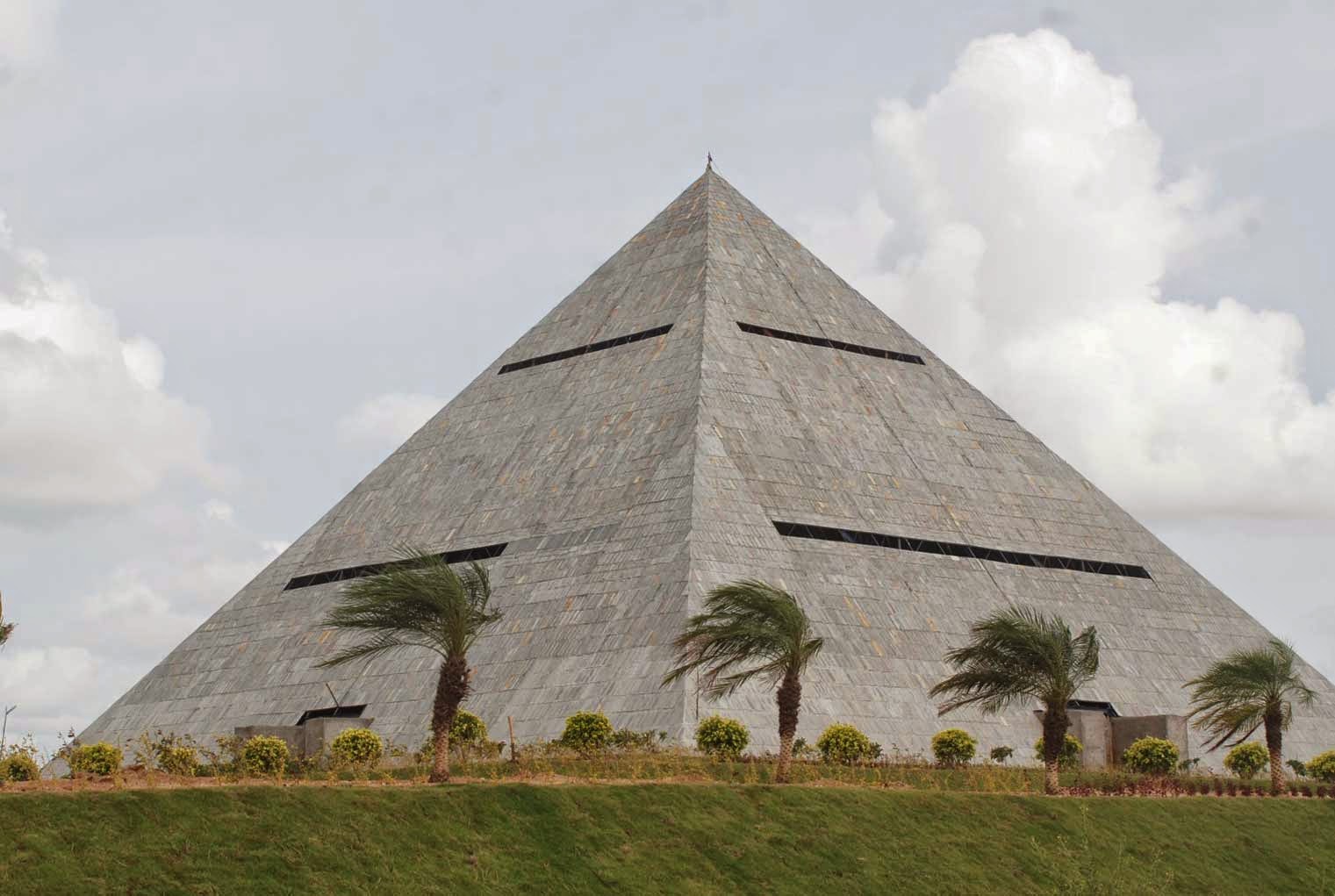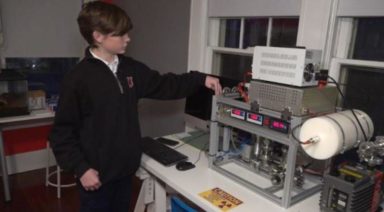Can Pyramids Enhance Meditation?

Can Pyramids Enhance Meditation?
The Pyramid Spiritual Society Movement
The ancient Egyptians believed in pyramids as a resting place with cosmic power to connect the dead with their afterlife. In India however, the Egyptians’ idea has been parlayed as a source to harness cosmic energy for the purpose of meditation.
Since the early ‘90s, when the Pyramid Spiritual Societies Movement began building pyramids in India, there have now been over 20,000 pyramids built for meditation all over the world.
The PSSM, has made its mission, dubbed Pyramids Everywhere, to construct as many meditation pyramids as possible, with locations primarily in the Andrha Pradesh region of India, as well as in other countries such as Malaysia, Vietnam, Spain and the U.S. The pyramids range in size from small, domicile-size structures, to massive meditation centers, capable of hosting thousands within and tens of thousands on surrounding campuses.
The project, started by Subhash Patri a.k.a Brahamarshi Patriji, claims to be non-religious and non-profit with the goal of spreading a type of meditation called Anapanasati, while also providing free food and classes to spiritual seekers. Patriji says he is not a guru, but a spiritual scientist who has achieved enlightenment.
Harnessing the Power of the Pyramid
According to Patriji and the PSSM, pyramids align naturally with the Earth’s electromagnetic field and are thus built with each corner oriented directly toward all four cardinal directions. Patriji breaks down the word pyramid into two parts:
- Pyro, meaning fire or energy
- Amid, meaning center
- Therefore, a pyramid is a structure with energy at its center
Patriji claims that meditation in a pyramidal structure has three times the power of regular meditation leading to electromagnetic and chemical reactions during meditation where every cell in the body is activated to its full potential.
Saying that he had conducted experiments and studied this extensively before starting the PSSM, Patriji concluded that pyramids were the greatest receiver and amplifier of cosmic energy. He said he believes that meditation in pyramids creates healing, preservation and out of body experiences.
Maitreya Buddha Pyramid
The Maitreya Buddha was the first mega-pyramid built by the organization in Bangalore, stretching 160 feet by 160 feet at its base and reaching 102 feet tall. The pyramid has a capacity for 5,000 people with a platform reached by a spiral staircase, called the King’s Chamber, at one-third the height of the pyramid. This platform can seat 40 meditators and is considered the point where the maximum energy of the pyramid can be received and transmitted.
Source: Krishna Raykar
Maheshwara Maha Pyramid
It didn’t take too long before the successor to the Maitreya Buddha Pyramid was built. Although its construction was somewhat bigger, with a base spanning 180 feet by 180 feet and a capacity of 7,000, the PSSM built a massive campus surrounding the Maheshwara Maha Pyramid for spiritual seekers. The campus, spread over 150 acres, boasts a massive kitchen, supposedly capable of servicing 100,000 people. The PSSM also built a canopy on the campus able to shelter 50,000 people for meditation sessions. The Maheshwara Maha Pyramid is considered the largest meditation pyramid in the world and is modeled after the pyramids at Giza.
Meditation Pyramids Worldwide
Russian Pyramid Research Part 1
Pyramids stand as monuments to the greatness of ancient civilizations which have left behind only traces of the mysteries which shaped their cultures. As David Wilcock introduces us to some of the key scientific concepts of pyramid power, we see how these simple shapes can affect the future advancement of human civilization.
A 12-Year-Old Boy is Youngest Person to Achieve Nuclear Fusion

Jackson Oswalt has become the youngest person to achieve nuclear fusion at the age of 12 years old. Through trial and error, and $10,000 of equipment purchased on the internet, Oswalt built a homemade nuclear fusion reactor in his room, baffling his parents and members of the scientific community.
Though now age 14, experiments Oswalt conducted two years ago were verified by the internet hobbyist group, Open Source Fusor Research Consortium (OSFRC). He beat out the previous record holder, Taylor Wilson, who performed the feat at age 14.
“The start of the process was just learning about what other people had done with their fusion reactors,” Jackson said in an interview with Fox News. “After that, I assembled a list of parts I needed. I got those parts off eBay primarily and then oftentimes the parts that I managed to scrounge off of eBay weren’t exactly what I needed. So, I’d have to modify them to be able to do what I needed to do for my project.”
Hailing from Memphis, Tenn., Oswalt said he decided he didn’t want to waste his time on video games or other typical adolescent activities, instead finding himself enamored with science and, more specifically, nuclear physics.
After reading about his predecessor, Oswalt decided he could beat Wilson’s record and began researching the gear he would need to build a high-volt, atom smashing, plasma reactor in his bedroom.

Jackson Oswalt next to his nuclear fusion reactor via FoxNews.com
Combing through the OSFRC’s online forums and working under the supervision of his dad, Oswalt built a 50,000 volt reactor in about a year, achieving the desired results of his experiment just hours before his 13th birthday.
Nuclear fusion is the same reaction that powers our sun and other stars, but on a much larger scale. In theory, a successful nuclear reactor could provide clean, unlimited energy to the world eliminating our reliance on finite fossil fuels that pollute the planet. Some believe this technology has already been realized and suppressed at the behest of corporate interests in oil and gas.
If a 12-year-old kid can create a nuclear fusion reactor in his room, why can’t the most advanced energy facilities in the world create one on a larger scale?
The trick to achieving successful fusion is to build a reactor that outputs more energy than is put in, and scientists at MIT have come close to building such a mechanism. In 2016, the university’s Alcator C-Mod tokamak reactor achieved a 16 percent increase from a 2005 record when it reached a temperature of 35 million Celsius for a period of two seconds. Though conveniently, funding for the reactor from the US Department of Energy ended the following day, despite their success.
More recently, scientists have begun to construct a larger tokamak reactor, which uses a toroidal apparatus to produce fusion in plasma, in southern France. This reactor will be 800 times the size of MIT’s Alcator C-mod reactor, but won’t be complete for another 15 to 20 years.
And while several other private firms are working on similar tokamak reactors of their own, its surprising there isn’t more government investment in this technology when it portends a future of clean limitless energy.
Is this because it’s actively being suppressed?
For more on suppressed technology check out Disclosure with Dr. Steven Greer:





































